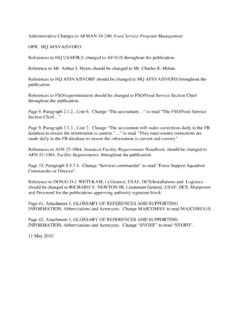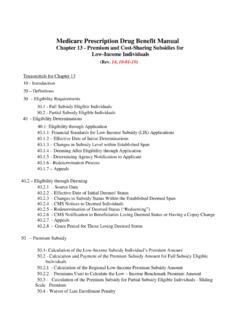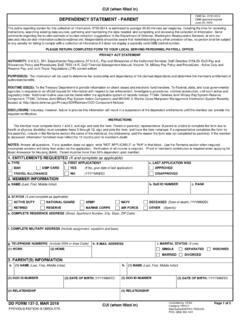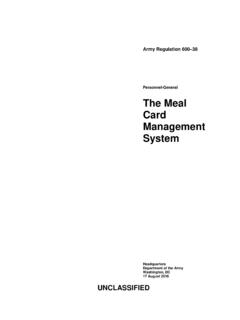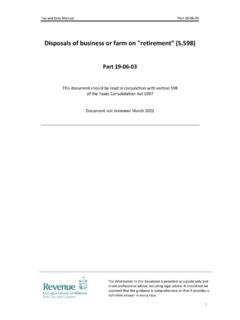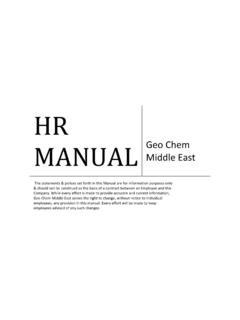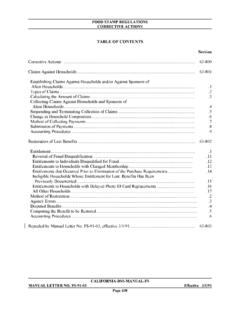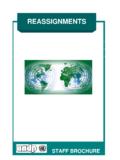Transcription of Social Safety Nets and the Food Security Crisis - fao.org
1 1 Box 1: Conditional Cash Transfer: Mexico s Oportunidades Rigorous evaluations show that the programme has contributed to improving the health and nutritional status of children and adults, along with school enrolment rates. In the context of rising food prices, it has enabled the Government to rapidly respond to the Crisis . In 2008, the Government increased the budget dedicated to the programme; payments to the poorest households also increased. Although the amount of transfers did not entirely compensate for the increase in food prices, it had a mitigated effect on the Crisis (FAO 2009). Social Safety nets and the food Security Crisis The impact of soaring food prices on poor households can be dramatic, exacerbating food insecurity negatively impacting on nutrition and creating Social tensions.
2 Therefore, urgent and comprehensive responses are needed. In addition to meeting the immediate needs of vulnerable households, it is necessary to build long-term resilience to contribute to sustainable global food and nutrition Security (UN HLTF 2008). The International Labour Organization (ILO) estimates that 80 percent of the world s population lacks access to adequate Social protection, and more than half lacks any coverage at all. In response to the food , fuel and financial Crisis , the demand for Social protection and Safety net interventions has increased, as also recognised by the adoption of the UN Social Protection Floor Initiative (ILO-WHO 2009). In fact, Social protection and Safety net interventions are increasingly deemed important counter cyclical Social policies that can minimize the effects of crises and food price volatility, as well as address current and future vulnerabilities.
3 Characteristics of Social Safety nets Safety net programmes, as part of the broader Social protection agenda, aim to address risks, vulnerability and Social exclusion. Safety nets help vulnerable households be protected against livelihoods risks, maintain an adequate level of food consumption and improve food Security . They also help prevent them from adopting damaging coping strategies and depleting their assets. In the context of agriculture, they might also alleviate liquidity constraints for smallholders, boost demands for farm products, foster income-generating strategies, and create multiplier effects throughout the local economy (Devereux et al. 2008). The following are examples of Safety net instruments: Cash transfer or food vouchers The distribution of cash or food vouchers gives beneficiaries additional resources to purchase food and other goods, which may contribute to maintaining caloric intake and diet quality.
4 food vouchers may be restricted to certain types of food for nutritional purposes (FAO 2011). Cash transfers and vouchers may be conditional or unconditional, universal or targeted to specific groups. Conditional cash transfers consist of regular payments to poor households in exchange for their compliance and participation in health, nutrition and education programmes, thus helping to improve food Security while achieving other human development goals (Box 1). Unconditional transfers include measures such as Social pensions, child support grants or family allowances. Potentially, they have lower administrative costs and enable poor households to have full command of the resources transferred.
5 Transfers and vouchers are appropriate when markets are functioning, and food is available, thus stimulating the local economy. However, if food is not available on the market, they can have inflationary effects (FAO 2011). food distribution in kind 2 Box 2: Ethiopia s Productive Safety Net Programme (PSNP) The PSNP, launched in 2005, aims to provide transfers to food -insecure households, strengthening livelihoods and shifting away from emergency food aid distribution. The programme promotes graduation , defined as the moment when households can meet basic food needs and are able to face modest shocks. The number of people covered by the programme has increased from 5 to 8 million in 2008.
6 The programme provides transfers (cash and/or food according to regions) in return for work, and provides direct support to households with no labour or other means of support. Transfers were un-indexed, but in response to rising food prices and declining value of cash transfers in 2008, the payment was raised from Birr 6 to Birr 8 per day (FAO 2009; Sabates-Wheeler and Devereux 2010). Box 3: India s National Rural Employment Guarantee Scheme (NREGS) Launched in 2006, the India s NREGS confers a statutory right to rural people to claim up to 100 days of work per year from local administration, at the minimum unskilled wage rate. In 2008, the programme was scaled up to cover all districts, generating 2,163 person days and benefiting 45 million households.
7 This type of programme is being considered in other countries (ILO 2010). These programmes entail the distribution of food in kind to beneficiaries. The food distributed can be locally purchased (if available), brought in from other parts of the country or imported through government purchase or food aid (FAO 2011). If food is purchased locally, it can help increase demand and stimulate agricultural production. However, when food is in short supply it can have an inflationary effect. If food is brought in from other regions or abroad, it could reduce local prices (FAO 2011). School feeding has become an important component of food assistance. In times of food Crisis , these programmes may discourage parents from taking children out of school (FAO 2009).
8 Universal food subsidy These interventions entail providing a subsidy on food items. food price subsidies are generally not recommended, as they are usually costly, difficult to remove and not well targeted to the poor (WB 2008). However, costs may be reduced through indirect targeting, limiting the subsidy to staple food mainly consumed by the poorest households (FAO 2011). Careful monitoring is necessary to prevent the development of black markets, distortions in trade and production, and the erosion of the private sector in case food is distributed through public channels (FAO 2011). Employment-based Safety nets Public works (Box 2) and employment guarantee schemes (Box 3) are the most common employment-based Safety nets .
9 They entail a regular payment, in cash or in kind, in exchange for work. Employment guarantee schemes generally refer to long-term rights-based programmes, in which a level of entitlement to work is provided (ILO 2010). Public work programmes can offer short-term employment, particularly to address negative impacts of seasonality, economic shocks and cyclical downturn. They have the potential to employ poor and vulnerable workers, thus mitigating the impact of the Crisis on employment, but also creating productive assets that poor people can benefit from. Public works consist mainly in labour-intensive infrastructure development projects; however, there are increasing examples of work in the Social sector, environmental services and community driven programmes.
10 In some programmes, skills and training components have been introduced (ILO 2010). Wages in traditional public works are typically set under market rates to ensure self-targeting; however, the promotion of employment guarantee schemes that pay a minimum wage rate are likely to enhance decent work conditions and give rural workers bargaining power (ILO 2010). Employment guarantee schemes refer to longer-term rights-based programmes which ensure some level of entitlement to work. These schemes can be both universal and targeted; the critical distinction is that they incorporate a guarantee that creates access to employment as a right. Many of the elements of these programmes can be incorporated into long-term employment programmes.










